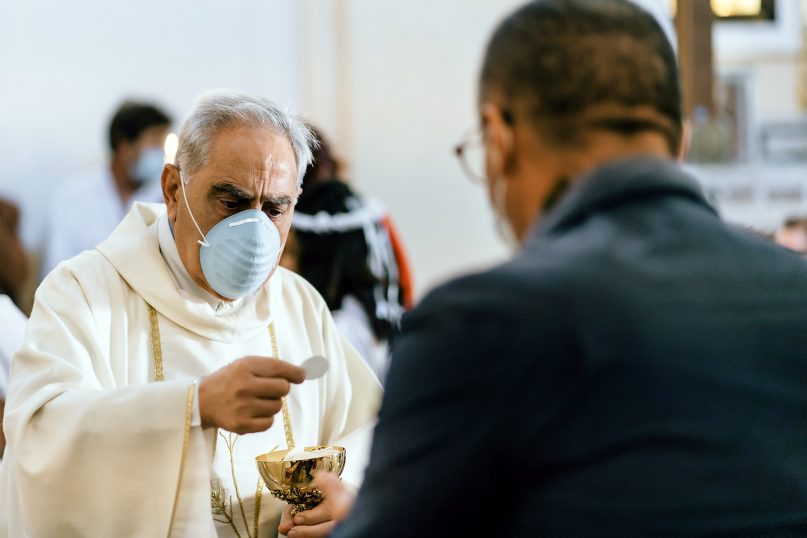(RNS) — For Rabbi Katie Mizrahi, the rabbi of the Reconstructionist synagogue Or Shalom in San Francisco, the COVID-19 pandemic has been long, stressful and full of surprises.
During the pandemic, Or Shalom has experimented with a few outdoor services, teamed up virtually with several other synagogues to offer a joint West Coast Shabbat experience and collaborated with the San Francisco Night Ministry to celebrate Hanukkah, both virtually and with men and women who live on the street.
Mizrahi said the past two years have given the synagogue an opportunity to “reconstruct our Jewish practice.
“Change itself is not a bad thing from our perspective,” she said.
After two years of a global pandemic, rabbis, pastors and other congregational leaders have given up predicting the future. Some say they are exhausted. Some are thinking about quitting. Others, while they are weary and the future is uncertain, say the pandemic has also brought opportunities for ministry and growth.
RELATED: Churches’ ministry to those hurt by the pandemic shows ‘monumental’ growth, study says
Or Shalom has experienced all of these realities. The congregation has innovated and tried new initiatives but has also seen the toll the pandemic has taken on leaders. Like other congregations, Or Shalom was also affected by what is popularly called The Great Resignation — a term for data showing about a third of Americans quit jobs during 2021.
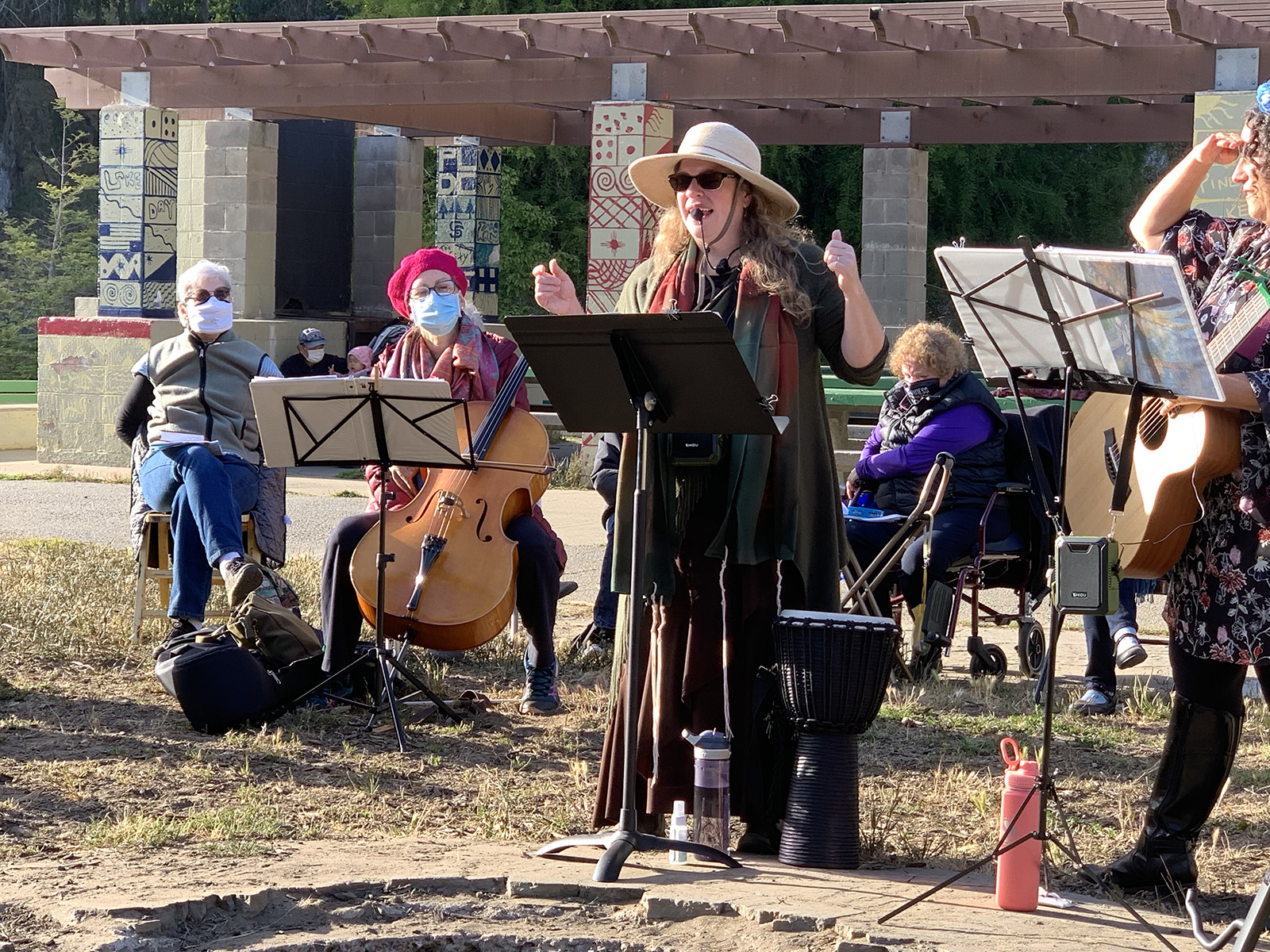
Rabbi Katie Mizrahi leads an outdoor service for Or Shalom in San Francisco in May 2021. Courtesy photo
This past August, said Mizrahi, Or Shalom lost its music director, synagogue administrator and a number of school teachers. The rabbi sees their departures as part of the broader pandemic experience of many workers.
“Work has become a religion for many Americans,” she said. “The pandemic has exposed the emptiness of that way of living.”
The pandemic has also taken a toll on volunteers who run crucial programs, such as formation classes, at many houses of worship that allow them to attract and keep new members. A new study from the Hartford Institute for Religious Research at Hartford International University found that before the pandemic, about 40% of regular congregation members volunteered. That number has dropped to 15%, according to the study.
That has made longterm planning for those programs challenging and exhausting.
“The people who run those ministries are just tired, you know,” said Becca Bruner, who co-pastors Paoli Presbyterian Church in the Philadelphia suburbs. “They’ve had to be creative a lot.”
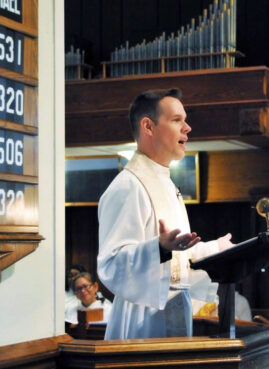
The Rev. Daniel Brereton speaks at St. John’s Dixie church in Mississauga, Ontario. Courtesy photo
Anglican priest Daniel Brereton, the pastor of St John’s Dixie, an Anglican parish in Mississauga, Ontario, is frank about his struggle with depression and his attempt to untangle what triggers it. That includes being “ghosted” by congregants who disappear without acknowledgement, an experience that seems to have been more common during the pandemic.
“I think this whole COVID experience has been one of disconnection and strain on relationships,” he said. It has also underscored that parishes are made up both of dedicated, highly committed churchgoers — and those who are in the pews trying to get their needs met.
“I think there may be a lot more consumers in our communities than we thought there were,” said Brereton.
Scott Thumma, director of the Hartford Institute, has been the principal investigator on a study called Navigating the Pandemic: A First Look at Congregational Responses, part of a larger, multi-year analysis of its effect on worship communities. More than two-thirds (67%) of clergy in the study said 2020 was the hardest year of their ministry. At the same time, said Thumma, only 8% said they had seriously considered leaving, though 37% had given it a thought during the year.
Hartford researchers found it was mid-sized churches, ranging in size from approximately 100-250 people, that experienced the most conflict over mask-wearing and other COVID-related protocols, he said. Congregations of that size are also “probably the most likely to have suffered declines both prior to the pandemic, and also during the pandemic,” Thumma noted.
“They can’t do intimacy really well, you know, on a small scale, but they also can’t do choice and variety and large entertaining worship services as well as the larger congregation,” he said.
Still, congregations have been remarkably nimble in their responses, the Hartford study found, as innovation became a necessity. During the pandemic, many congregations were spurred to launch new ways of reaching their flocks and the wider community, as their regular patterns of congregational life were disrupted.
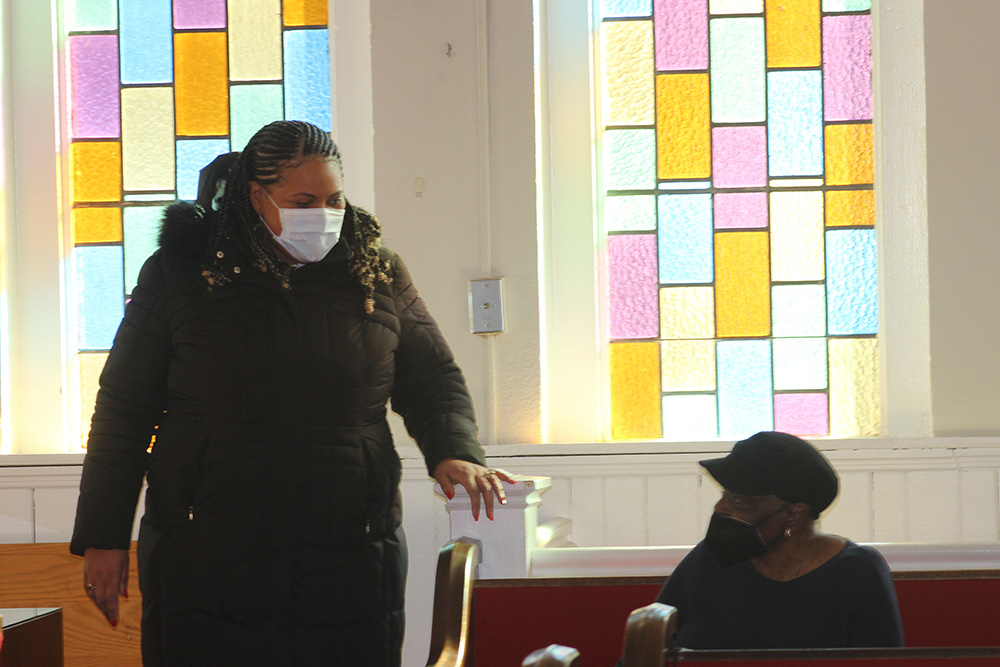
Pastor Ivy Berry, left, of Bethel AME Church in Downingtown, Pennsylvania. Courtesy photo
The 63-member Bethel AME Church in Downingtown, Pennsylvania, was able to create a number of new ministries, said pastor Ivy Berry. They also provided members with Amazon tablets, holding an instructional session on how to use them for those unfamiliar with the technology.
“That was a learning moment for us,” said pastor Berry, who commutes almost two hours to shepherd her congregation.
At the Downingtown Friends Meeting, members are currently worshipping from home, or gathered outside and inside the historic meetinghouse, said Irene Oleksiw, the clerk of the congregation’s Worship & Ministry Committee, which oversees the group’s spiritual life.
“We don’t like that (not being able to worship together in one place), but we’re finding other ways to stay connected,” she said.
Though a mid-sized congregation, the nondenominational Church at Denver in Denver, North Carolina, was largely able to avoid pandemic controversy, in part because they currently meet at a local charter school, said lead pastor Matt Hearn.
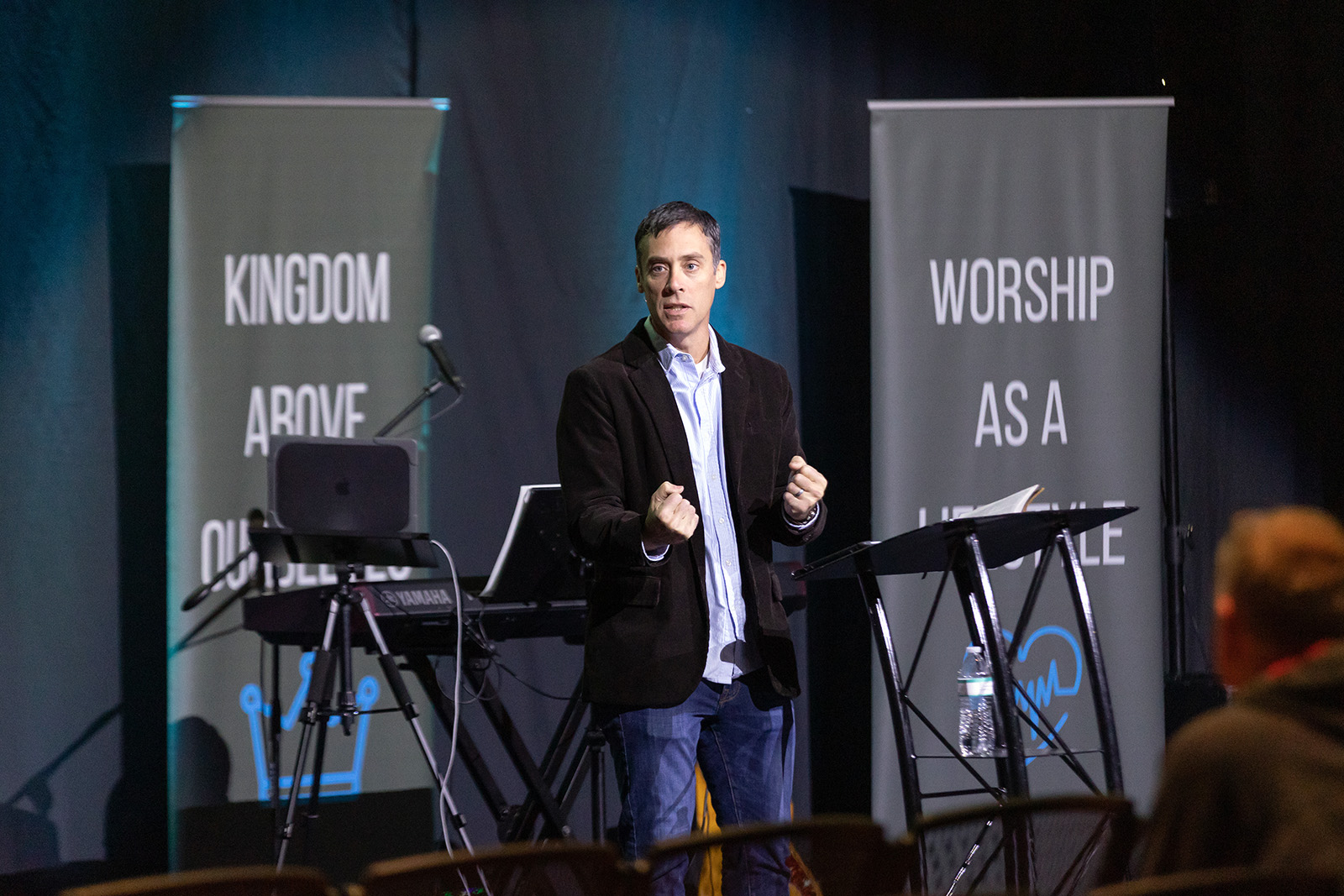
Matt Hearn speaks to Church at Denver in Denver, North Carolina. Courtesy photo
Hearn said he had the support of his board of elders in making pandemic-related decisions. He also credited the close relationships between clergy in his town, a suburb of Charlotte, for helping to serve each other as sounding boards.
“We also live in a community where the pastors know each other pretty well. We kind of leaned on each other to kind of talk through: What are you doing? How are you handling this?” he said.
In Vermont, where the Catholic diocese followed directives from the governor, around 80% of the population is fully vaccinated. Purely by chance, the diocese had started to upgrade its online communications capabilities just prior to the pandemic, said Ellen Kane, director for communications and development for the diocese.
Closed briefly during the spring of 2020, parishes across the sparsely populated state in the Catholic Diocese of Burlington opened their doors again in June of that year — and haven’t closed them since, said Monsignor John McDermott.
McDermott served as the pastor of a church with its own parochial school and is now in his current position as chaplain of the Newman Center at the University of Vermont. That’s in addition to his work as diocesan vicar-general, a post he describes as the bishop’s “righthand man.” When COVID-related problems or questions arose, he said, they normally end up on his desk first.
Some parishes have bounced back to pre-COVID attendance, he said, while others, particularly those who might have aging populations, aren’t there yet. “I think some people have gotten used to, you know, kind of going into Mass wearing their pajamas and sitting on the couch,” he added, while others seem to be waiting for an official announcement that the pandemic is over (one he’s uncertain will ever come).
The children at Burlington’s Christ the King parochial school, he said, “were remarkably flexible.” Even with masks and social distancing, “the kids overall were just so happy to be in school and to have somewhat of a normal routine.”
As the omicron surge seems to be ebbing across the country, clergy are looking ahead, integrating new technologies and ministries into their parish routine — but they are also trying to take stock of the impact of the past few years.
The disruption of COVID may end up being clarifying, said Bruner, co-pastor of Paoli Presbyterian Church: “COVID sped up what was already happening — the end of Christendom. We no longer have the same number of cultural Christians. That was happening already. The level of commitment of people who are here is much higher. Ultimately, for the sake of the kingdom, that’s OK.”
RELATED: As COVID continues, church-run food pantries, ministries adapt and expand
Editor’s note: The name of the archdiocese in Vermont has been corrected to the Roman Catholic Archdiocese of Burlington, and the name Ellen Kane has been corrected in the 26th paragraph.
